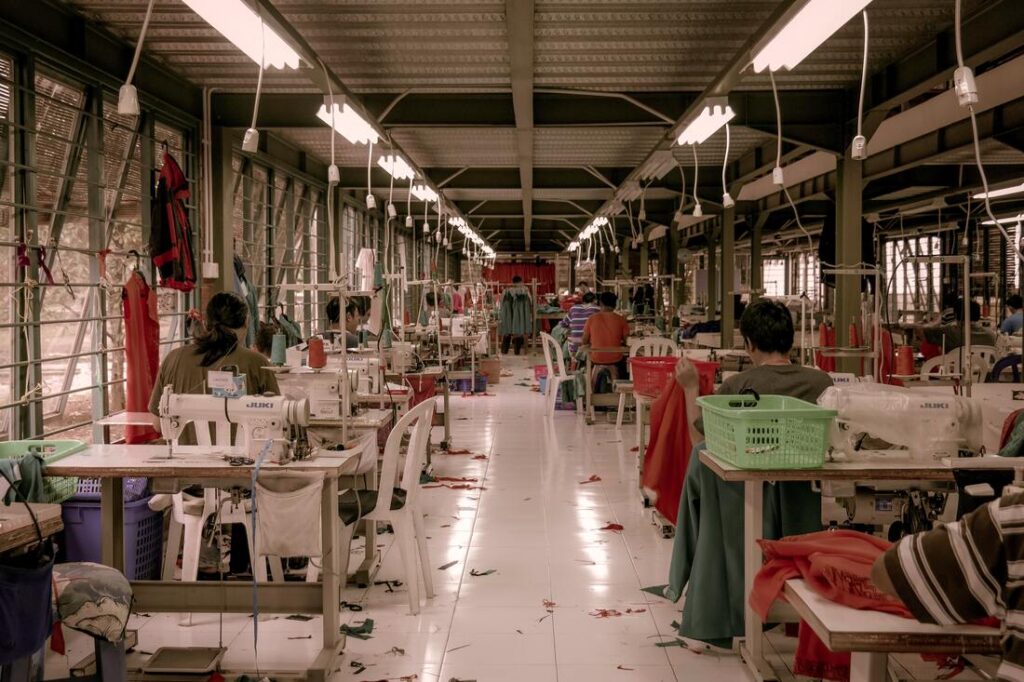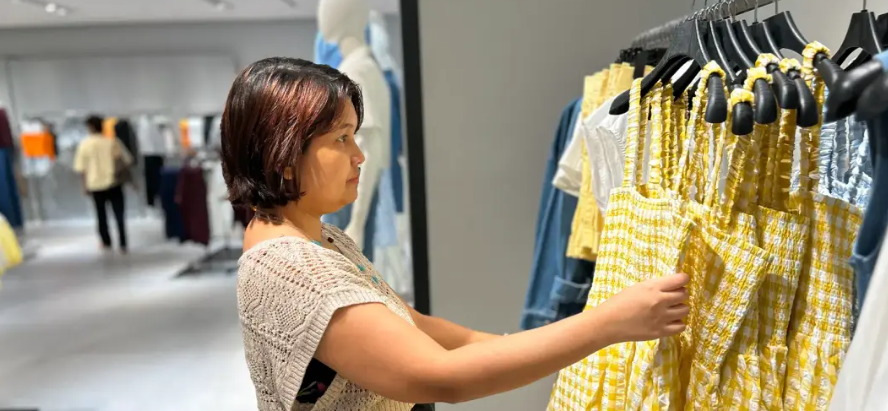Part 1 of 4
1242 words; 6 min read.
This article is part of a series of deconstructing a massive global industry into areas for disruption on the road to #sustainability, by spotlighting 4 macrotrends in fashion’s supply chain that we can tackle, right now.
The fashion industry is huge. Like, HUGE huge. It has so many moving parts to it since the advent of current-day globalisation has let #fashion manufacture their clothes via a global assembly line.
If you’re reading this blogpost then you would have some knowledge already about the origins of fast fashion and its predecessor–high-street fashion —but to recap, I’ll give you a quick history lesson.
What does globalisation have to do with fashion?
At its core, globalisation is the exchange of ideas, capital, and goods across the world, driven by technology. Ships ruled globalisation since the fifteenth century—think about the African slave trade, colonialism, and the intercontinental trade in sugar and coffee that made capitalism possible.
After World War II, many nations looked to break down barriers of trade between nations, promote free trade, and set up global organisations. The Bretton Woods Conference in 1944 created the World Bank and the International Monetary Fund.
But since the 1980’s, one powerful phenomenon has taken over the world: The Internet.
Globalisation, then, in its current format, was largely the work of powerful multinational corporations (MNCs) that spanned all over the globe, together with mass media. Multinational giants have profoundly restructured the world economy, global culture, and our lives on an individual level, without us even realising it.
Of course, there are both negative and positive consequences to globalisation, and fashion production, retail, marketing, and consumption are as much caught up in this web, along with other industries such as automotive, consumer electronics, and agriculture

Value of the global fashion industry (2016). Source: fashionunited
Supply Chain Challenges and Opportunities in Fashion
The problem with the fashion industry is that its supply chain is completely out of control. The biggest impact globalisation has had for MNCs in fashion is the internationalisation of supply chains, to capture cost efficiencies through outsourcing, alliances, and foreign direct investment. In instances of mass-market production manufacturing in developing world regions (typically associated with disposable fashion), having to maintain short lead times and low costs, especially in satisfying geographically diverse customers, has led to significantly reduced transparency in supply chains.
We know now, that with increasing responsiveness about social and environmental justice across many developed and developing segments, this is problematic and will continue to be so, unless fashion completely rethinks its supply chain strategies.
The problem with the fashion industry is that its supply chain is completely out of control.
The State of Fashion and Driver for Sustainability
We live in a finite world, and like most industries in this linear economy we’ve found ourselves in, fashion has been consuming raw materials, producing goods that consumers need, and these products eventually find their way to landfill once they’re disposed of.
However, now comes the new paradigms: population growth and disposable fashion.
(I say disposable fashion because the term accurately reflects the apparent quality of the garment, and because nowadays you can make a fashion item ‘fast’, but not necessarily from exploitative means. I’ll save that topic for another day.)

And this is where I bring up the Water-Food-Energy Nexus.
You must be familiar with the Sustainable Development Goals, yes? If you remember, the first goal aims for Zero Poverty, the second for Zero Hunger, the third for Good Health and Wellbeing…… and the list goes on.
In terms of priority actions, I feel the top three pretty much sums up what’s truly important in the world, so going back to the water-food-energy nexus: do we use water, land, and minerals to grow food, provide clean water and shelter, and generate energy, or make clothes, shoes, and accessories?

The four-part linear clothing system. Source: A New Textiles Economy Report, Ellen MacArthur Foundation.
Today’s linear clothing system has damaging effects on society and the environment. I quite like to remind fellow readers of this four-part categorisation of fashion’s supply chain as summarised very neatly by the Ellen Macarthur Foundation.
- Fibre production—from growing crop, rearing sheep for wool, harvesting silk, and reducing a petrochemical to fibrous yarn
- Clothing production—as you can imagine, yarn needs to become textile, and textiles require dyeing and finishing with all sorts of treatments, and once that’s sorted, humans are required to piece panels of clothing together, in Cut-Make-Trim facilities, with their bare hands and tired bodies in not-so-flash conditions
- Use—this one’s interesting. Consumers often forget they are actually part of the fashion supply chain! Consumer care is important in this part of the apparel lifecycle
- After use—once garments are no longer ‘loved’ or needed, they are normally landfilled or incinerated (about 87% of what’s produced)
What’s eating fashion today
You know what’s hard? Trudging through the web of the internet to read a whole heap of reports, reports, and more reports to understand key issues for sustainability throughout the *whole* of fashion’s supply chain.
You know what’s easy, though? Reading this article, because I have actually done this, and I have managed to sum up fashion’s greatest challenges and opportunities.
Herewith I present to you four macrotrends that are eating fashion.
1. Demand volatility
2. Radical transparency
3. Technology and R&D
4. Purchasing Model
Problem no. 1: Demand volatility
Popularised by fast fashion, the textile, clothing and footwear (TCF) industry has been characterised by short life cycles, high demand volatility, low predictability, and high impulse purchasing. This is not a new struggle.
This, coupled with a very dynamic market and market uncertainty can create problems of either overstocking or understocking. (Can you guess why we have an enormous waste problem in fashion?) The MNCs we mentioned earlier: the likes of Inditex group, H&M, and Uniqlo, that employs lean supply chain management strategies, who have offshored their manufacturing and sourcing to Bangladesh, China, and India where they have enjoyed low-cost labour as a competitive advantage, are truly affected by demand volatility, where seasonality dictates trends. Now that we’re either recovering or actively fighting the COVID19 pandemic, we have more unknowns.
When product demand is unpredictable, there should be a strong focus on matching strategy with the uncertainties in demand and supply.

Source: McKinsey Apparel CPO Survey 2019
The solution to this problem is pretty simple, and again, these are not new ideas. Companies need to adopt a more flexible and demand-driven sourcing model as margins are constantly under pressure. Sourcing from one cheap country to the next cheapest is not a business model I’d be relying on for the next decade or more if I was a CEO at any one of those conglomerates.
It’s well-known that some of the lean supply chain management practices these big MNCs adopted were focused on decreasing cost measures and improving profit margins. They’ve enjoyed the competitive advantage of sharing resources and materials, and collaboration of specialised skilled labour and manufacturing facilities but in the current context, this can be argued as being ‘wasteful’, such as having communication breakdowns for ordering and sourcing.
What are the solutions? I have three words for you: internal process improvements, where companies engage in flexible production structures. How?
- End-to-end process efficiency—where supply chain risks are looked at from both areas of upstream and downstream relationships
- Real-time information of inventory levels between manufacturers and brands to better forecast demand
- Enhanced communication systems (advanced analytics, big data) and relationship configurations with greater visibility of information between entities throughout the supply chain to expedite responses to changes; and
- Cross-functional collaboration in your own organisation.
In summary, companies should focus on customer-centric, agile product development to meet customer demand, not minimising the price of supply.
In this mode, companies must accept that change is a constant. Some practical examples:
- Zara model but instead of ‘creating’ trends, work with what’s available within manufacturing regions
- Supply-driven textiles and finishing, not demand-driven
- Creating limited and creative products.
Enjoyed reading this post? Check out Part 2 of the series here.
Join us in our Slow Fashion movement with the hashtags #ConscientiousFashionista and #wardrobetruths on Instagram, and follow us at @fashinfidelity.
Tags: #sustainability #fashion #fashionsupplychain #supplychain #circularity #ethicalfashion #sustainablefashion #conscientiousfashionista #fastfashion #slowfashion #wardrobetruths #fashioneducation #fashion #fashinfidelity




